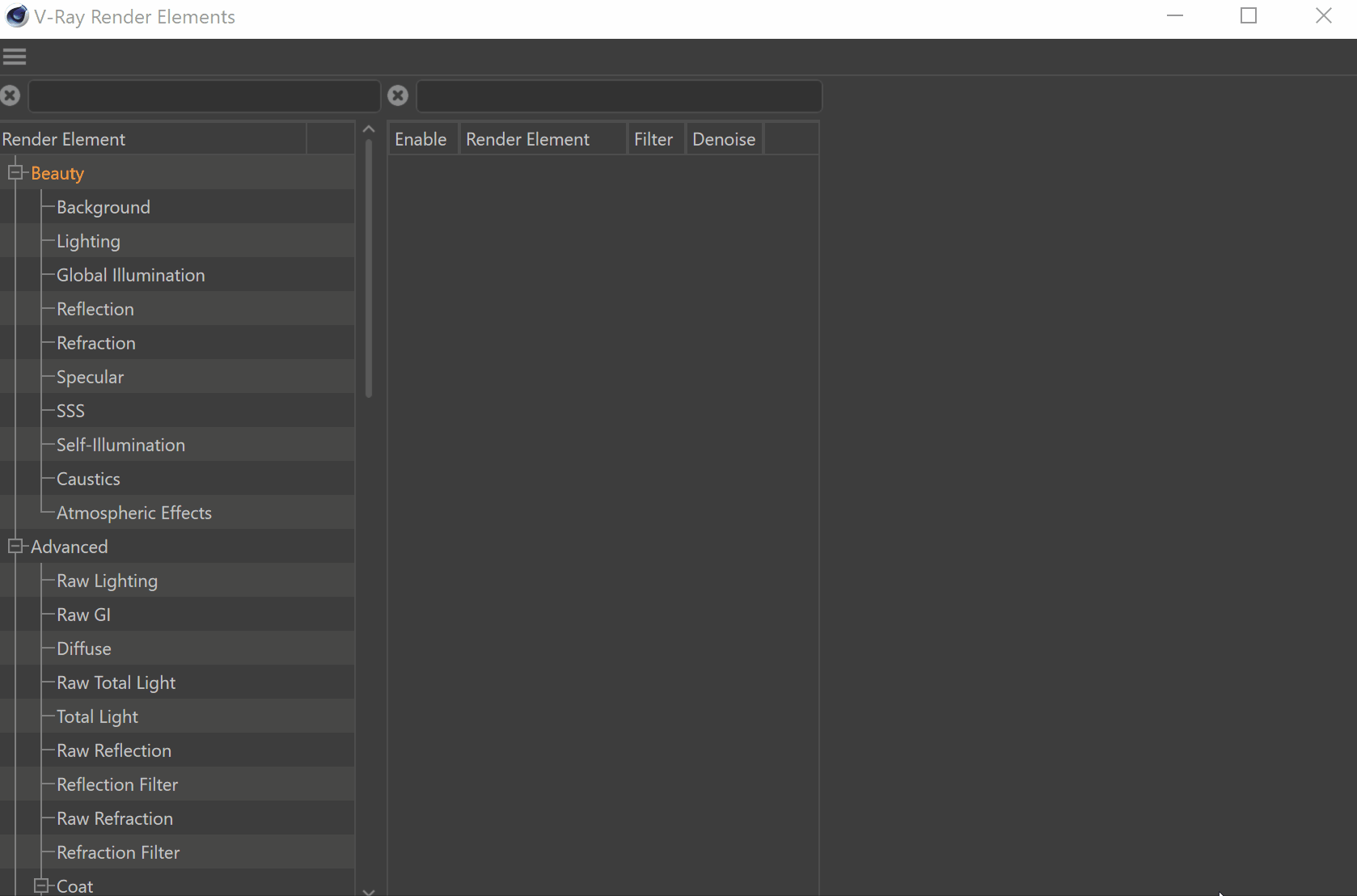The Refraction Render Element stores refraction information calculated from materials – such as glass or water – that refract objects behind them in the camera's view. This means the brightness, coloration, etc. of the refractions can be adjusted without the need to re-render. Any material in a scene that has a value set for its Refraction parameter will generate refraction information that can be seen in this render channel. A surface with no refraction values set in its material(s) will contain no information in the render element and therefore render black. The Refraction Render Element is a key component in the main Beauty Element and can easily be used to control the refractions in the Beauty composite. The Refraction Render Element itself is already a composite of the VRayRawRefraction render element multiplied by the VRayRefractionFilter render element. When finer control over refractions is needed in the composite, add these additional two channels to the output along with the VRayRefraction render element channel. UI Path: ||V-Ray|| > Render Elements > Refraction
|
|
|


